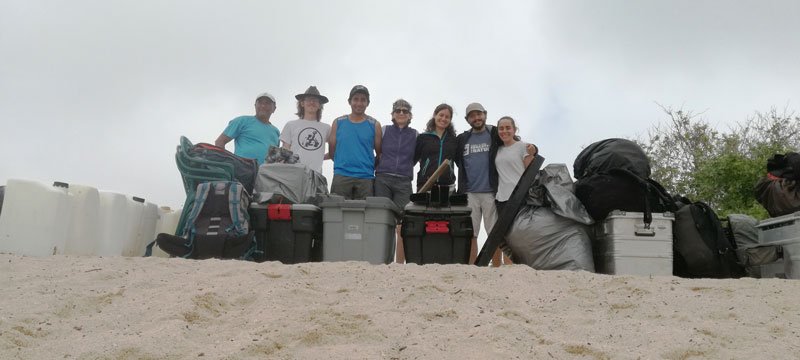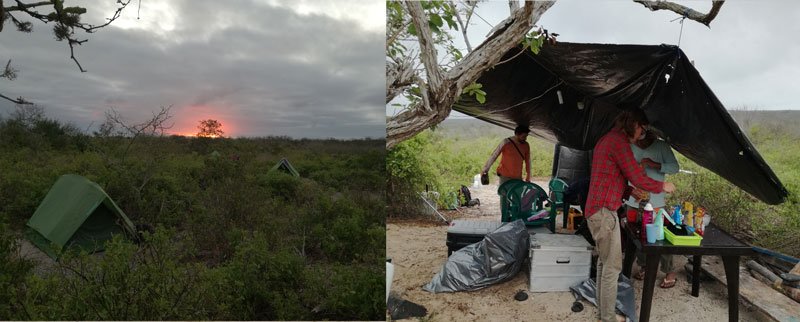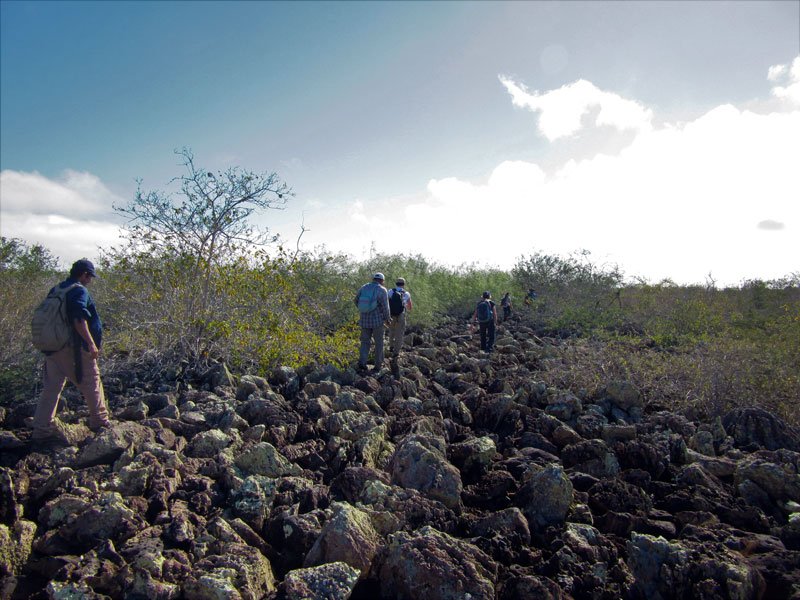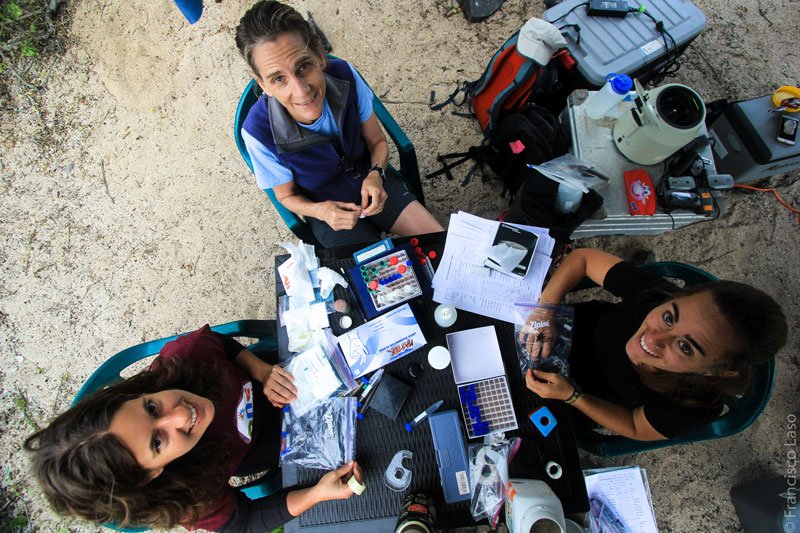It has been ten years since the Galapagos Tortoise Movement Ecology Programme (GTMEP) started to research the migration of giant tortoises, how migration affects tortoise health and reproduction, and the effects of anthropogenic environmental change on migration. At the end of July, a group of scientists from the Charles Darwin Foundation, Saint Louis Institute for Conservation Medicine, and Galápagos National Park traveled to Española Island, where we have been working since 2012, to replace GPS tags on several tortoises. In addition, we took this opportunity to initiate our tortoise health research program on Española, a program that is already taking place in Santa Cruz and Isabela (Alcedo) islands. The aim of the program is to learn more about giant tortoise health and the most prominent diseases that may affect their conservation and welfare.
In the early hours of July 29th, our group of seven scientists and a GNP ranger boarded the boat Solmar on our way to Española. We were excited for this adventure!

After three hours traveling through the Pacific Ocean and trying our best to keep our breakfasts in our stomachs, we arrived at Manzanillo beach. We travelled straight on to El Caco, our study site for the next 5 days. This is where the challenge of the expedition began.
To reach El Caco, we had to walk about 6km every day. The first day, jumping rock to rock trying to keep our balance was great fun, perhaps due only to our enthusiasm for what we were going to find on arrival. On this first day, we inspected the area where we were going to be working, and after some time, we managed to find and sample our first four tortoises before heading back to setup camp.

The next morning we woke to rain and clouds. ”Great,” I thought, “the best weather to not get burnt!” But little did I know that the rain would make yesterday’s fun 6km walk much more of a challenge.

When the lava rocks get wet, they are like an ice-skating rink. We all stumbled and slid along the trail that seemed like it was never going to end. The only two people that were able to walk casually were Ainoa and Freddy, who turned out to be experts at walking on wet lava rocks. I focused my efforts on trying to follow them in as dignified and elegant a manner as I could, but it was impossible. My only consolation was that the rest of the team seemed to be in the same situation. Finally, we arrived at the study area with bruises, exhaustion and a stomachache from laughing so much – and the day had not even started yet! We began our search for tortoises and at last, they appeared.

The new solar GPS tags are smaller than the ones the project was using before and can last for up to 10 years. These GPS tags not only collect information about the location of the tortoises, but also record data on the tortoises’ velocity, acceleration, temperature, and horizontal and vertical movement.
Just after 5pm, we arrived back at the camp, but the work was not done yet. We had to continue working in our camp lab as blood samples must be processed within 24 hours of collection. So, after a quick bath in the ice-cold water of the Pacific Ocean at this time of year, we got to work processing all of the samples. You only need a few drops of blood to obtain a bunch of information about a tortoise’s health. For example, a few drops can tell you if they have an infection or anemia or if the females are reproductively active. We also take eye, mouth and cloacal swabs that we analyze at the Charles Darwin Research Station laboratory.
All the samples must be kept in a freezer, which can be a challenge on a deserted island without electricity. Equipped with a portable freezer and a travel centrifuge, the three vets on the team managed to set up a portable lab where we could keep and process all the samples. Now we were ready to work!

That is how the days went by on this beautiful island: looking for tortoises, sampling them, and replacing their GPS tags. It was a busy week, but it is satisfying when you realize that all the goals of the trip were achieved: 45 tortoises sampled, 7 GPS tags placed, and over 12 flight hours with a drone to map crucial tortoise’s habitat.
There is nothing better than turning your work into your passion and being able to enjoy every little moment. To watch owls fly over the camp, listen to the sea lions resting on the beach, fight the cucuves from stealing your food or biting your suitcase, and see stars shower the beach – all of these small moments make you forget how difficult it can be to work on a remote island and create such a unique and exciting experience.




